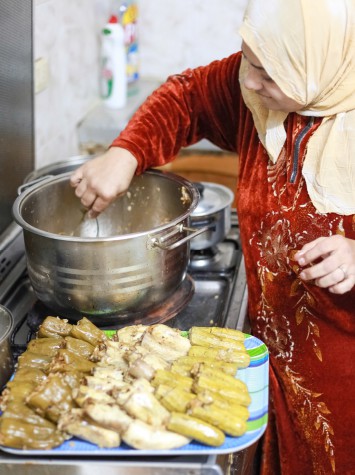The top killer cooking habits!
It is very seldom that Egypt scores high in any international survey and statistic related to education, scientific achievements, winning medals in various sports competitions around the globe etc. The Egyptian cuisine is definitely adding big-time to the current obesity problem Egyptians are suffering from, and there is no doubt that it is the most dominant factor.
More than half of the world’s obese live in just 10 countries: the United States, China, India, Russia, Brazil, Mexico, Egypt, Germany, Pakistan and Indonesia. In Egypt, more than 71% of men and 79% of women were overweight/obese.
According to a new, first-of-its kind analysis of trend data from 188 countries recently released, more than 58% of men and more than 65% of women across the Middle East and North Africa were found to be either overweight or obese in 2013. More than 75% of the countries in the region had overweight and obesity rates of more than 50% among both men and women. Overall, there are an estimated 259 million overweight (180 million) or obese (79 million) people living in the region today.
Is it the unhealthy Egyptian cuisine, is it our genetics, is it the lack of exercise, or is it the storm of fast food chains that has invaded Egypt in the past 20 years or a combination of all of the aforementioned factors?
It is well known that Egyptian food is full of deliciousness. Whether it’s the bashamel macaroni, the grape leaves, or the chicken fried in beef lard(samnabaladi), people can take it for granted that Egyptian food tastes amazing, but at the same time comes with a huge caloric content.
And instead of minimizing the portions in order to minimize the damaging effect of the food, people go overboard when it comes to quantities. They almost eat till they faint, as the huge quantities of these caloric bombs ingested apparently block the satiety center of the human organism from working properly!
After the main dish is sucked away, it is usually immediately followed by a devastating amount of calories coming from the second round of calories, namely the dessert.
Umm Ali, Basbousa,Kunafeh,a Baklava, Aish El-Saraya, Rice pudding, Zainab Fingers, Luqmat El-Qadi, Balah El-Sham are just a few examples of the waist-busting and physique deforming Egyptian sweets. And in case the calories ingested are not enough or the case of “malnutrition” in question has not been resolved by the main dish, one can add honey, whipped cream, almonds and nuts as a topping.
Therefore-and after all mentioned- it does not come in form of asurprise thatEgyptian food is among the unhealthiest in the world according a survey by a leading charity organization.
Egypt scores comes in 80th out over 100 countries on the Oxfam Global Food Index which measures food quality, affordability, in addition to obesity and diabetes rates. This study revealed that Egypt ranks behind other Middle Eastern countries including Jordan (51) and Saudi Arabia (71) in terms of diet diversity and food quality.
Furthermore, it must be mentioned here, that overweight and obese populations in Egypt has severely increased burdens on health care expenditures. The increase in obesity has subsequently led to an increase in the overall cases of high blood pressure, cardiac diseases, respiratory illnesses, diabetes, cancer, and other sicknesses.
Therefore, and if the scientists in the field of medicine, nutrition, fitness do not cooperate very soon to tackle and solve this problem in both a constructive and efficientmanner , the situation will be more and more difficult to solve and the spiral will get more and more out of control.
Dr. Alhussein El-Shennawy. Nutrition Consultant and Personal Trainer. Head Coach of “Th Egyptian Warriors”
https://www.facebook.com/EgyptianFitnessPage
https://www.youtube.com/user/DrShennawy
Email: elshennawy@gmail.com
Mobile: +2-0100-791-6006
Clinic: +2-012-7171-1103


